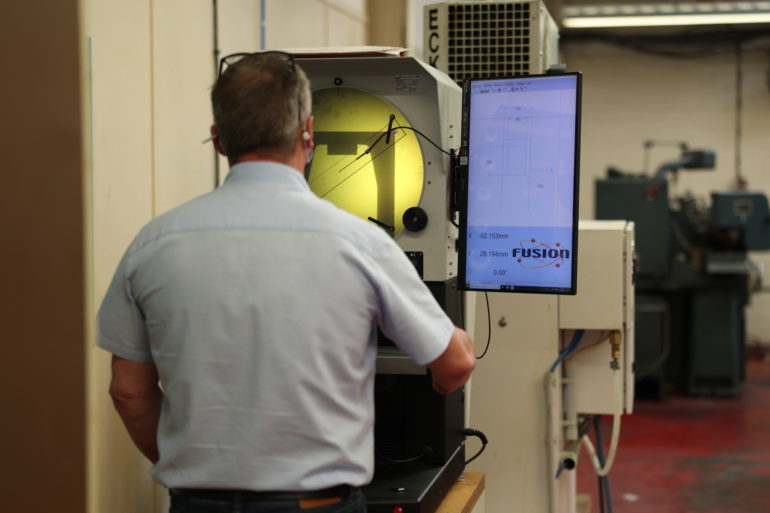bowersNorthamerica
bowersNorthamerica

With automation and AI-driven inspection systems being the buzz words of the moment, it’s easy to forget there is still a light to be cast on more traditional measurement solutions.
Walk into almost any engineering workshop, and you’ll still find one tool quietly holding its own, the profile projector. Shine light through a part and project its shadow onto a screen, it’s a simple theory. Yet, that simplicity hides an incredible level of accuracy.
From a tiny turned shaft to a complex turbine blade, the profile projectors, also known as Shadowgraphs to some, magnify every edge, radius, and curve, allowing you to check if it’s made to spec, within just a few microns.
There’s no software learning curve, no calibration anxiety, just a clear, magnified image that tells you everything you need to know in seconds.
For decades, the Baty Shadowgraph has been a trusted name in optical measurement. But, today’s Baty Shadowgraphs are a world away from the ones first built decades ago. Models such as the SM300 and R600 still use precision optics and rock-solid mechanics, but now come with digital readouts, CNC stages, and optional Fusion software that lets you capture data, compare profiles, and even import CAD overlays.
From compact bench-top models such as the SM300 and SM350 to large floor-standing systems such as the R400 and R600, every Shadowgraph is built for precision, stability, and ease of use. With screen sizes up to 600mm, workstage travels up to 450 × 200mm, and 0.5 µm digital resolution, it delivers dependable accuracy where microns matter.
Modern Baty systems blend old-school optics with new technology. Interchangeable lenses (10× to 100× magnification), dual lighting for profile and surface inspection, and advanced Fusion software with edge detection and CAD overlay make these optical projectors as capable today as ever.
Despite all the advances in metrology, the Shadowgraph remains a go-to for many inspection teams. Why? It’s non-contact, so there’s no risk of damaging delicate parts, it gives instant visual feedback, and it’s versatile enough to handle parts that digital probes struggle with.
The Baty Shadowgraph isn’t just a machine, it’s part of the DNA of precision engineering. It’s been there for decades, helping thousands of companies guarantee quality and build reputations for accuracy. It’s a reminder that great engineering doesn’t always need reinventing. Sometimes, it just needs refining.